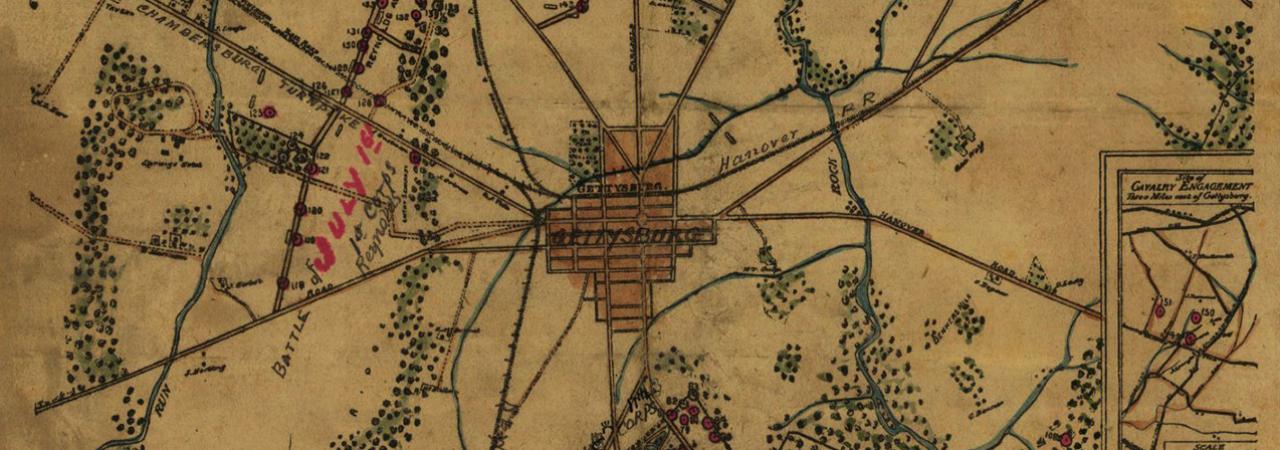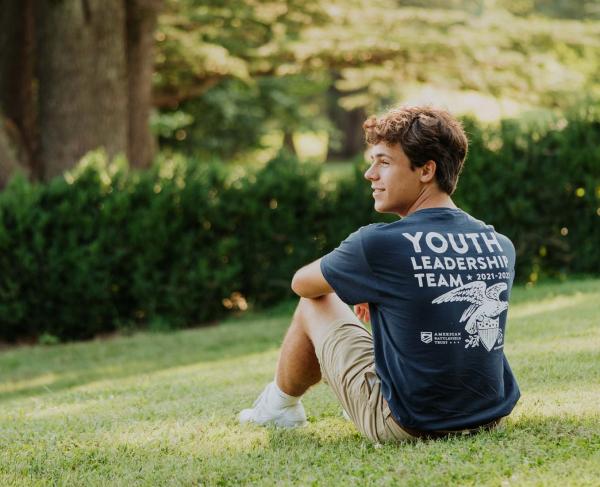
Gettysburg in 1863
With so much written about the Battle of Gettysburg, it's not surprising that the war's bloodiest battle has become surrounded by delusions and misinformation. Here are seven myths about the Battle of Gettysburg, debunked.
Myth 1: The Battle of Gettysburg was fought over shoes.
There was no mention of shoes having anything to do with the Battle of Gettysburg until 14 years after it happened. In 1877, Confederate General Henry Heth wrote, “Hearing that a supply of shoes was to be obtained in Gettysburg, eight miles distant from Cashtown, and greatly needing shoes for my men, I directed General Pettigrew to go to Gettysburg and get these supplies.” Problem is, there were no shoe factories anywhere near Gettysburg in 1863. Rather, roads took the armies to Gettysburg. It was difficult to travel through south-central Pennsylvania without passing through Gettysburg.
Myth 2: The First Day was not a large battle.
Despite how it is often portrayed in movies and documentaries, the first day of the battle of Gettysburg involved nearly 50,000 soldiers and was one of the bloodiest days of the Civil War – with 16,000 men killed, wounded, missing, or captured. If the battle of Gettysburg ended after the first day, it would still rank in the top twenty bloodiest battles of the Civil War, with more casualties than Cold Harbor and almost as many as Fredericksburg.
Explore the events of July 1, 1863 with our First Day at Gettysburg page.
Myth 3: John Wesley Culp was killed on his uncle's property.
John Wesley Culp moved South before the battle of Gettysburg and joined the Virginia ranks. Although his unit fought on Culp’s Hill, and he was the only man in the 2nd Virginia Regiment killed at Gettysburg, he did not die on his uncle’s property for which Culp’s Hill is named. He most likely died on Abraham Spangler’s property, or one of the farms far to the east of Culp’s Hill.
Myth 4: The fight for Little Round Top was the most important combat of the battle.
Historians have long written about the disaster that would befall the Union army if Little Round Top fell into Confederate hands. But even before the fighting began, Gen. Meade had already ordered more than 10,000 reinforcements to the Union left. Had the Confederates captured Little Round Top, they would have been greatly outnumbered and low on ammunition, with a command structure in complete disarray. With nearly equal numbers, the Confederates almost captured Little Round Top twice during the battle. Why is it difficult to believe that organized and fully-supplied Union troops could not retake it with at least triple the number of troops?
For a more detailed debunking, check out The Myth of Little Round Top by the American Battlefield Trust’s own Garry Adelman.
Myth 5: Pickett’s Charge was the largest, most decisive, and most consequential charge of the war.
Although often portrayed as the greatest charge of the Civil War, it was far from the largest, most decisive, or most consequential. Those honors would belong on other battlefields at Gaines’ Mill, Chickamauga, and Petersburg.
To learn more about the war's most memorable charges, check out Greatest Charges of the Civil War.
Myth 6: Abraham Lincoln finished the Gettysburg Address on the back of an envelope on the way to Gettysburg.
The original copy of the Gettysburg Address on its original stationery is in the possession of the Library of Congress. So, we know on what material he wrote it. It is also well documented that Abraham Lincoln wrote portions of the Address before he left Washington, and put the finishing touches on the Gettysburg Address in the home of David Wills at Gettysburg.
Myth 7: Gettysburg ghost stories are true.
With the exception of one story about Iverson’s Pits near Oak Hill there were no substantially disseminated ghost stories at Gettysburg for more than a century. The ghosts at Gettysburg phenomenon started in the 1990s which happens to coincide with people starting to make money on ghost books and tours. Today, there are scores of books and tours available for visitors but most all of these stories are not historical in nature. The American Battlefield Trust’s historian once heard a ghost story told in 1993. It was presented as fiction, but it only took three months until it was in a book as fact. By all means, believe what you want to believe, but please know that if water gets on a camera lens, it’s water—not a ghostly “orb.” If the sun shines into a camera lens, it’s called sunlight, not an “energy sphere."
Related Battles
23,049
28,063


